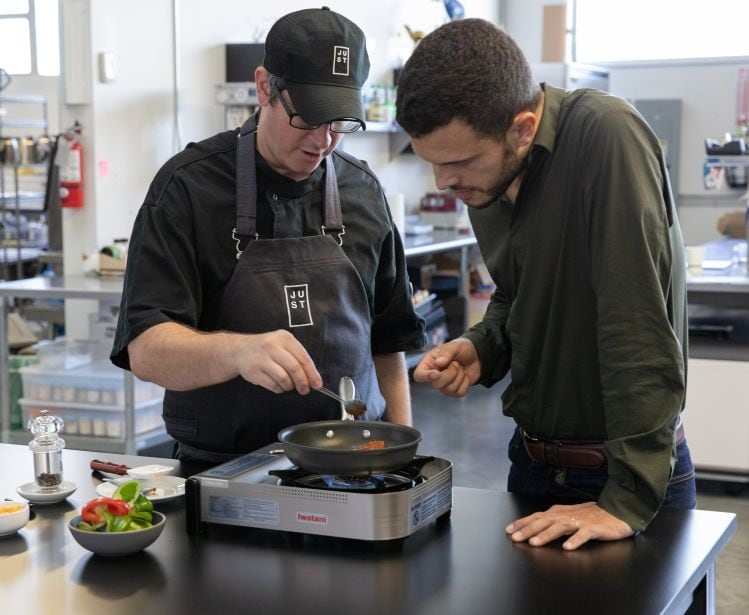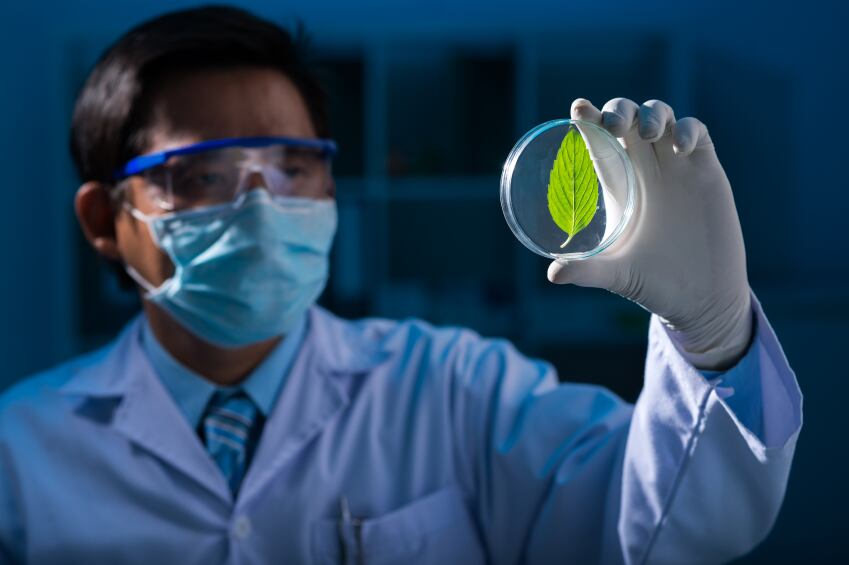European regulation governing the use of genetic modification in food is among the strictest in the world.
Under Regulation (EC) No 1829/2003 on genetically modified food and feed, GMOs must receive approval from the EC following a safety assessment by the European Food Safety Authority and evaluation by the Standing Committee on the Food Chain and Animal Health before they can be cultivated.
Europe also requires products containing GMO ingredients above a 0.9% threshold to be “clearly” labelled. The European Parliament established that packaging must state: “This product contains genetically modified organisms" or "this product contains genetically modified [name of organism(s)]" directly on the label. All non-packaged products that contain GMOs must include the statement within the product display.
In a controversial move – and to the dismay of many in the scientific community – European regulators have also determined that gene editing through CRISPR-CAS technology is also governed by the GMO rules.
According to David Green, director of farming group the US Sustainability Alliance, the region’s attitudes to GMOs are shaped by the time in which they were formed.
“That rejection of technology occurred… because it was poorly introduced to an unsuspecting consumer base,” he said yesterday at the Food Matters Summit in London. “In the mid-1990s there were food scares, mad cow disease in beef… people were concerned about what is happening: what are they doing to our food?”
In the face of public backlash, Europe’s political leaders were quick to acquiesce and failed to ‘take leadership’ by backing the scientific opinion, according to Green. “In terms of GMO there was no reason to reject the scientific opinion of their own food safety agency, EFSA.”
To Green, the divergent reactions in Europe and the US illustrate the importance of context. “GMO technology came along right at that time in Europe. In the US it was not an issue.”
This is not to say that legislators should blindly accept new developments, Green stressed. “When technology comes along - and science can deliver something – should it? Are there unintended consequences? These developments are going to need full and proper regulation and risk assessment.”
Context is key
Likewise, J.J. Price, international business development director at Japanese vertical farming company Spread.Co, said that external forces were a factor in his company’s successful bid to win the trust of Japanese consumers.
“When we started 12 years ago the environment [and people’s attitudes] were similar to GMOs. People would ask: ‘They are growing without soil? What is this?’”
Indeed, European organic regulations still state that fruit and vegetable grown using hydroponics – without soil – cannot be considered organic because they are not grown in soil. This, despite the fact that the closed loop systems used in indoor and vertical farms means there is no need for the use of pesticides.
Sadly, a national disaster was one of the driving forces behind the willingness of Japanese consumers to turn to vertical farming as a solution, Price suggested.
“In Japan we had a huge earthquake and tsunami and Fukushima [nuclear disaster]. This was a big food producing region… Consumers were concerned that now their food supplies might be impacted by radioactive contamination. That’s when food safety and transparency became more important for consumers.
“The more transparent the supply chain, that’s how to get people on board. And there were some external events that pushed people [towards accepting the concept of vertical farming].”
So, Green noted, if external factors and the cultural context in which new scientific developments are introduced plays a role in acceptance, it becomes important to ask: “How do we bring society along? We need to innovate but how do we get that acceptance?”
What’s in a name?
The importance of transparency and communication cannot be underestimated. And language is important, Price stressed.
“In Japan we don’t call it vertical farming it’s called a plant factory. Moving from the US we didn’t call it that – the naming is very important.”
Dr Kurt Schmindinger echoed this opinion, suggesting that the terminology chosen to describe cultivated meat could be an important factor for future acceptance.
“I wouldn’t call it laboratory meat because it won’t be grown in a laboratory. It will be grown in a brewery, like beer,” he stressed.
Using familiar references like brewing and fermentation could give consumers an accessible way to understand processes that otherwise sound very futuristic and even ‘un-natural’. And for this reason, Dr Schmidinger believes it is important to distance the sector from scientific sounding technology.
“The laboratory phase for cultivated meat is very long because it’s a new technology. But it will not be grown in a lab.”
‘Emphasise the advantages’
Dr Schmidinger also believes that it is vital to concentrate on positive messaging and the benefits that new technologies can deliver to food production.
“Emphasise the advantages. You could lower the levels of saturated fatty acids, we could raise levels of omega 3s. You could make something very healthy compared to conventional meat,” he suggested.
And while lab meat is prohibitively expensive, securing the backing of high-profile celebrities and influencers could ease its path to mainstream acceptance. “You can overcome this technological image so you don’t always have to be so defensive. You could make something trendy."
Putting sustainability front-and-centre
The importance of story-telling extends to the sustainability credentials of these ‘new’ modes of production, Green believes. “Sustainability is a macro issue – it affects everybody… We have to help create more context for our audiences.”
On the sustainability benefits of cultured meat, Dr Schmidinger noted: “When it comes to innovative, sophisticated methods like laboratory meat, lifecycle methods are challenging. This is the case when you want to do something that is futuristic.
“This tech might be similar in terms of energy to conventional meat, or a little higher. But the other inputs – like water – and greenhouse gas emissions are much lower.”
Similarly, vertical farming currently requires higher energy inputs but uses fewer land and water resources.
“With vertical farming when it comes to inputs, we can reduce water by 90%. Indoors in a closed system we can capture and re-use water. We can go from using one litre of water to 100ml. Our farms are fully automated, which cuts labour – another big issue for agri-food,” Price noted.
He is hopeful that innovations in the energy sector will also make electricity needs less of a sustainability sticking point in the future. “If we look at energy, vertical farming does consume a lot of energy – but there is a lot of movement and innovation in the energy sector… Solar panels as they work today are not enough to power a farm but there are some ‘smart city’ projects that we see have potential.”
Does plant-based point the way?
One category driven by technological advancements that has secured widespread attention and consumer acceptance is plant-based meat analogues.
Price believes that lessons can be learned from innovators in the space: “Plant-based protein has taken over vertical farming in terms of the spotlight. We are standing back and watching how Impossible and Beyond are building their brands… to sway the food culture.”
Dr Schmidinger said that, while the developments in plant-based have been fuelled by tech advancements, it is nevertheless an easier sell to consumers. “Plant-based… is easier because it sounds more natural.”
For cultured meat to gain acceptance, he suggested: “We need to market something that tastes good, is healthy and the right price. If we do this, we will see success. On the way, while there is a high price, we need to emphasise the positives.
“I hope this time we will be successful in introducing new technology that is really needed.”




